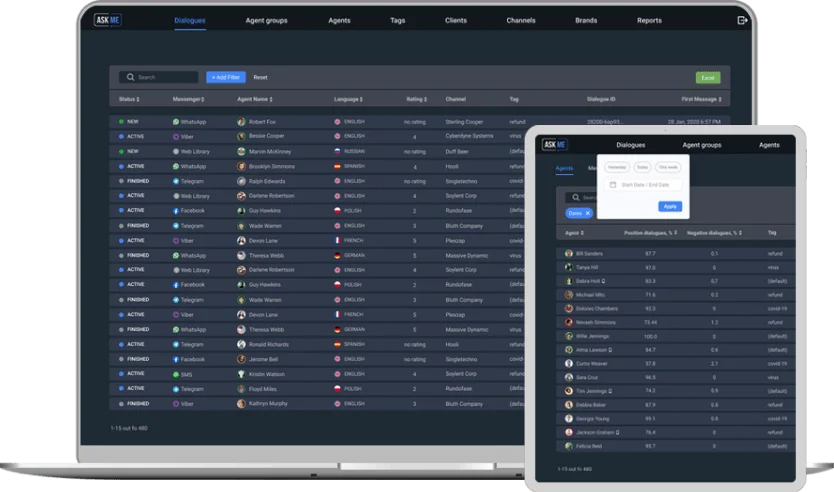What is NoSQL and how does it work
NoSQL databases are a great fit for many modern applications such as mobile, web, and gaming that require flexible, scalable, high-performance, and highly functional databases to provide great user experiences. Most NoSQL database systems manage data integrity with an approach known as BASE (Basically Available, Soft State with Eventual Consistency). Using BASE, data may be inconsistent for a period of time, but database replication eventually updates all copies of the data to be consistent. Some applications can tolerate this type of inconsistent data, whereas others cannot.
Note that the way data is modeled in NoSQL databases can eliminate the need for multi-record transactions in many use cases. Consider the earlier example where we stored information about a user and their hobbies in both a relational database and a document database. In order to ensure information about a user and their hobbies was updated together in a relational database, we’d need to use a transaction to update records in two tables. In order to do the same in a document database, we could update a single document — no multi-record transaction required. Certain operations are much simpler to perform using graph databases because of how they link and group related pieces of information. They’ve found regular use in fraud detection, recommendation engines, and identity and access management applications.
Advantages of NoSQL Databases
If you are looking for consistency, reliability, and a system to query structured data you choose SQL databases. There is no denying the fact that both SQL and NoSQL are some of the best of their kind. SQL is the most in-demand programming language for RDBMS and NoSQL is the preferred software for storing structured, unstructured and semi-structured data. NoSQL databases emerged in the late 2000s as the cost of storage dramatically decreased. Gone were the days of needing to create a complex, difficult-to-manage data model in order to avoid data duplication.
Inconsistencies on reads are eventually resolved, but the lack of consistency on writes is a serious issue. This problem is often solved by limiting all database interactions within a single application and integrating it with other applications using web services. This solution relates well with the general trend to use web services for integration purposes.
Document-Oriented:
Connect and share knowledge within a single location that is structured and easy to search. Developers in general and JavaScript developers in particular gravitate toward MongoDB, affirming its ongoing record as the database most wanted by developers according to StackOverflow. This scale-out architecture is particularly painless to implement in cloud computing environments where new computers and storage can be easily when to use NoSQL vs SQL added to a cluster. While SQL calls for ACID properties, NoSQL follows the CAP theory (although some NoSQL databases — such as IBM’s DB2, MongoDB, AWS’s DynamoDB and Apache’s CouchDB — can also integrate and follow ACID rules). The rapid growth of the volume, velocity, and variety of that data has led to the surge of NoSQL databases. The downside is that data may not persist after conflicts are reconciled.

SQL database schema organizes data in relational, tabular ways, using tables with columns or attributes and rows of records. Because SQL works with such a strictly predefined schema, it requires organizing and structuring data before starting with the SQL database. Databases can be considered as one of the important component entity for technology and applications.
What Is NoSQL Database? – NoSQL Explained
NoSQL databases come in a variety of types based on their data model. They provide flexible schemas and scale easily with large amounts of data and high user loads. Unlike relational databases, in which the information of a given object may be spread across multiple tables or databases, a document-oriented database can store all the data of a given object in a single document. Document stores typically store data as JSON, BSON, XML, or YAML documents, and some can store binary formats like PDF documents. Some use a variant of SQL, full-text search, or their own native query language for data retrieval, and others feature more than one query method.
- Some NoSQL models, such as object stores, have seen varying levels of use over the years but remain as viable alternatives to the relational model in some use cases.
- SQL and relational database systems are pervasive because they deliver a good, general purpose mechanism for supporting most data management requirements.
- Documents are addressed in the database via a unique key that represents that document.
- If the system is functioning and you wait long enough after any given set of inputs, you will eventually know the true state of the database.
- The consistency and integrity of the data are guaranteed by complying with this schema.
- Interestingly, Strozzi’s NoSQL database does in fact employ the relational model, meaning that the original NoSQL database doesn’t fit the contemporary definition of NoSQL.
NoSQL databases allow you to add new attributes and fields, as well as use varied syntax across databases. NoSQL databases are often used in applications where there is a high volume of data that needs to be processed and analyzed in real-time, such as social media analytics, e-commerce, and gaming. They can also be used for other applications, such as content management systems, document management, and customer relationship management. As time passed, the demands for faster and more disparate use of large data sets became increasingly more important for emerging technology, such as e-commerce applications. Programmers needed something more flexible than SQL databases (i.e. relational databases). With document databases like MongoDB it is common to put more data in a smaller number of collections.
How Does a NoSQL (nonrelational) Database Work?
NoSQL databases are widely used in real-time web applications and big data, because their main advantages are high scalability and high availability. Note that some NoSQL databases like MongoDB also have support for schema validation, so developers can lock down their schemas as much or as little as they’d like when they are ready. As a result, NoSQL databases can be queried using a variety of query languages and APIs. MongoDB, the world’s most popular NoSQL database, can be queried using the MongoDB Query Language (MQL).

However, they also suffer from being a relatively new and unproven technology, and they cannot provide RDBMS’ rich reporting and analytical functionality. Visit the interactive MongoDB documentation to learn more about querying a MongoDB database. In order to retrieve all of the information about a user and their hobbies, a single document can be retrieved from the database. The term “eventual consistency” means to have copies of data on multiple machines to get high availability and scalability. Thus, changes made to any data item on one machine has to be propagated to other replicas. HBase, Cassandra, HBase, Hypertable are NoSQL query examples of column based database.
Content management
A NoSQL database does not necessarily follow the strict rules that govern transactions in relational databases. These violated rules are known by https://www.globalcloudteam.com/ the acronym ACID (Atomicity, Consistency, Integrity, Durability). For example, NoSQL databases do not use fixed schema structures and SQL joins.

NoSQL Database is a non-relational Data Management System, that does not require a fixed schema. The major purpose of using a NoSQL database is for distributed data stores with humongous data storage needs. For example, companies like Twitter, Facebook and Google collect terabytes of user data every single day. NoSQL is an umbrella term for a loosely defined class of non-relational data stores that break with a long history of relational databases and ACID guarantees. Data stores that fall under this term may not require fixed table schemas, and usually avoid join operations. NoSQL databases have become popular because they store data in simple straightforward forms that can be easier to understand than the type of data models used in SQL databases.
Popular Categories
It is not limited to storing data in tables, instead, enables the big data to be stored in the structured, unstructured, semi-structured or polymorphic form. While a variety of differences exist between relational database management systems (RDBMS) and NoSQL databases, one of the key differences is the way the data is modeled in the database. In this section, we’ll work through an example of modeling the same data in a relational database and a NoSQL database. Then, we’ll highlight some of the other key differences between relational databases and NoSQL databases. NoSQL databases are purpose built for specific data models and have flexible schemas for building modern applications. NoSQL databases are widely recognized for their ease of development, functionality, and performance at scale.
